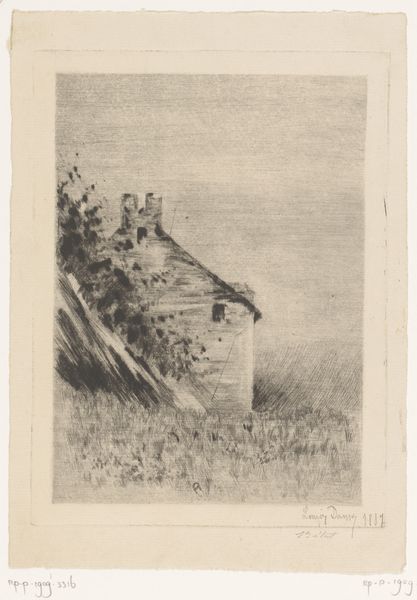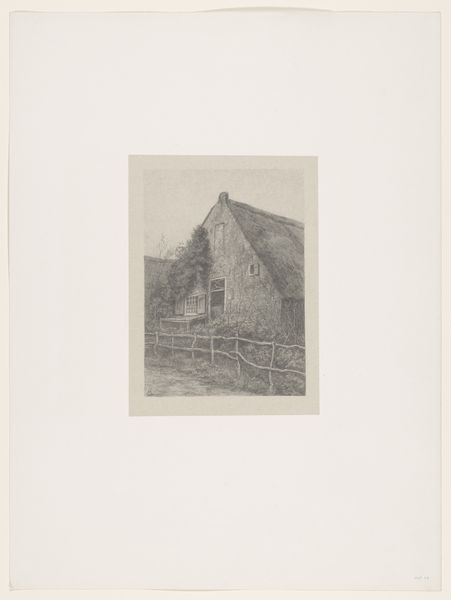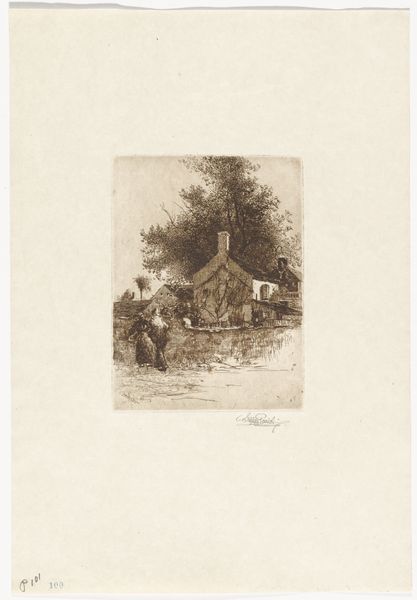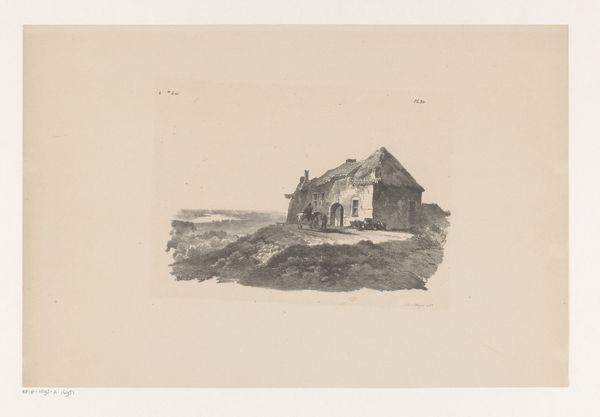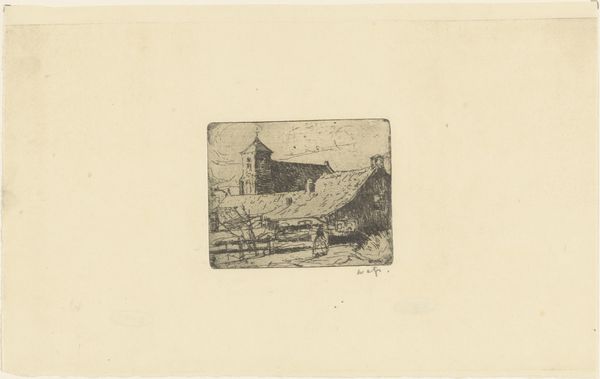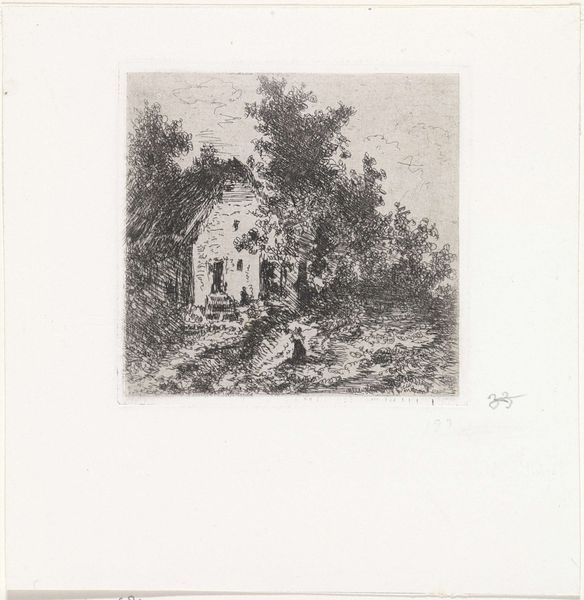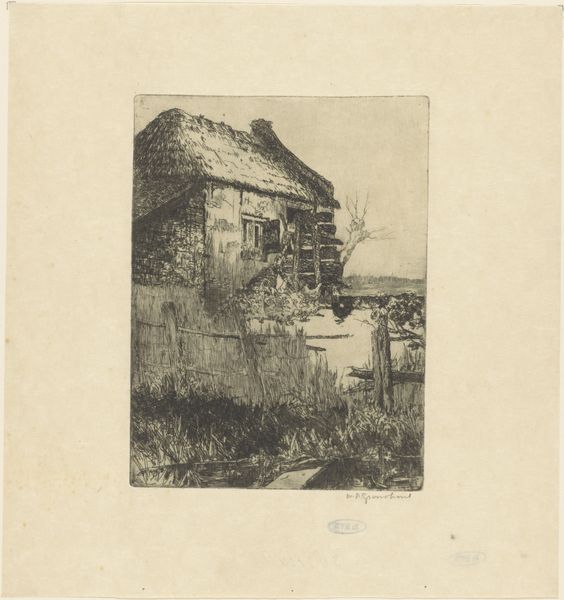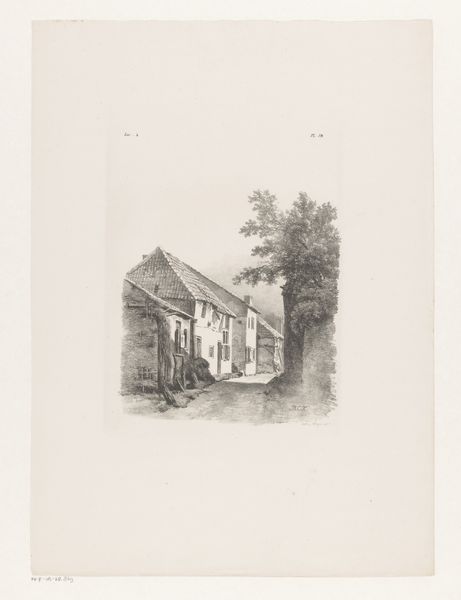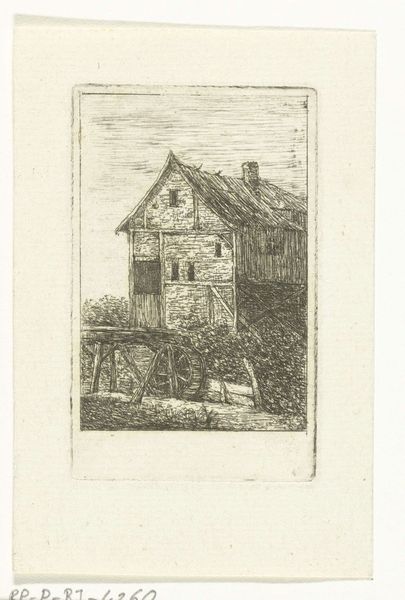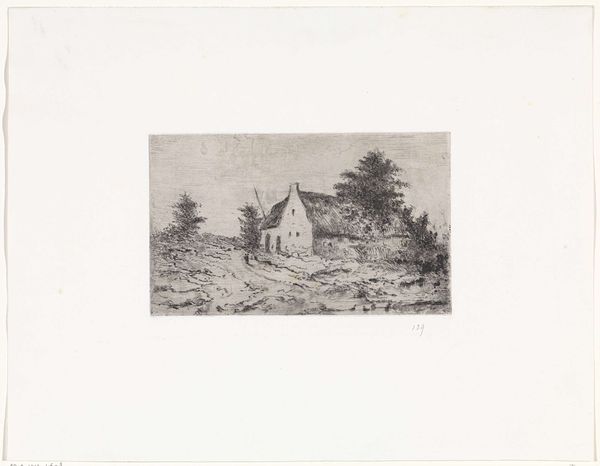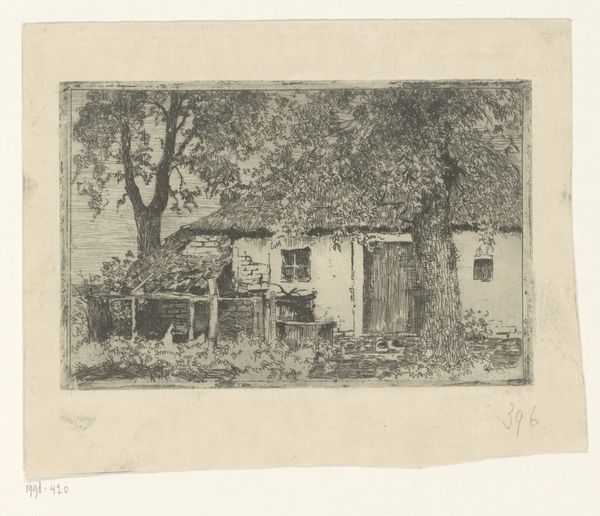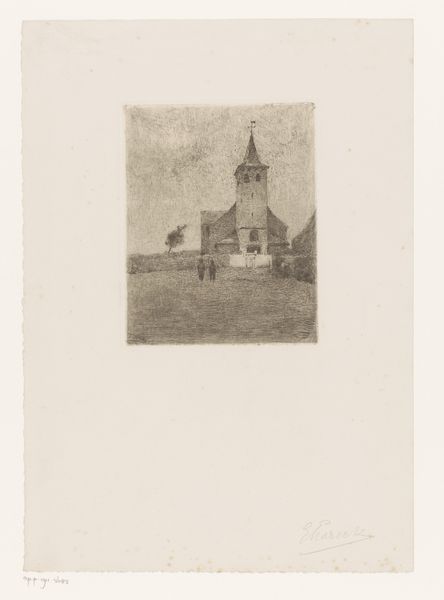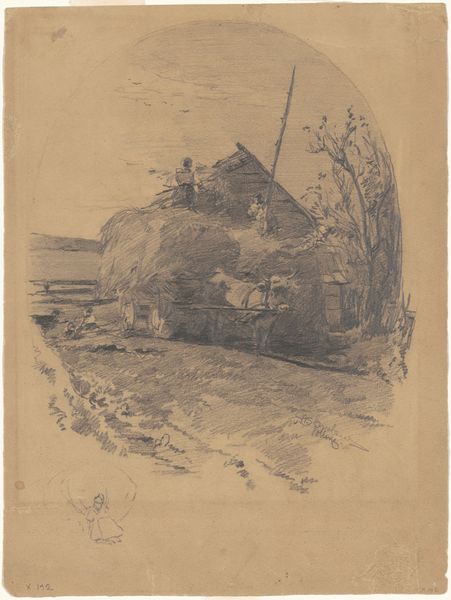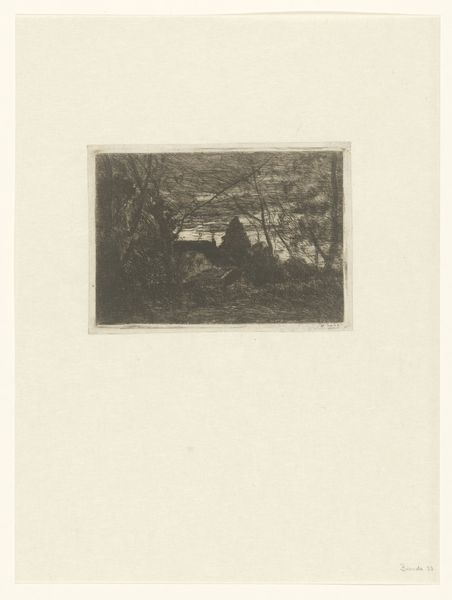
print, etching
# print
#
impressionism
#
etching
#
landscape
Dimensions: height 202 mm, width 151 mm
Copyright: Rijks Museum: Open Domain
Curator: The subdued tones here create a certain melancholy. A lone building nestled into the landscape; what are your initial impressions? Editor: It reminds me of a stage set—spare, almost theatrical. This print, entitled "Gebouw in een landschap" which translates to "Building in a Landscape," was created by Louise Danse in 1887. She employs an etching technique to portray what looks like an unassuming country building, currently housed in the Rijksmuseum's collection. But what does an unassuming building in the countryside mean within society? Curator: Indeed. Look closely at the etching: the way Danse has used line and shadow. As a print, and more specifically an etching, we can talk about how labor intersects with art creation. What kind of industry supports and utilizes these art practices? Who consumes them? I also notice a great level of care taken here in a style bordering on impressionism. Editor: The impressionistic elements serve to soften the rigid lines of the building, creating a more immersive feel. How would that aesthetic influence people's perception of architecture during the 1880's? Was this style utilized in rendering newly built architecture? How does landscape factor into this? What political message can this simple work make? Curator: Well, there's a certain democratization present here. This artwork made use of repeatable materials to promote new accessibility. Rather than a grand portrait, Danse depicts something far more humble. Who did it serve, and what class values might the choice to portray a normal countryside hold within an industrializing social framework? How are such subjects handled in contemporary prints and other art making materials? Editor: It gives pause to consider where it falls within landscape painting and etching of the time. Were more urban settings usually preferred? Why would Danse choose this rural view? Curator: Etching, in and of itself, has been used both as a process to emulate older drawings and as a fine artform in itself. In that regard, the artist had to consider which industrial means would most suit her social agenda here. What political choices go into even the slightest shift in a composition or application of material? Editor: The art historical scope feels very grounded by your perspective; what would that kind of lens let viewers carry from piece to piece of our collection? Curator: Understanding the choices around material helps us consider the choices in visual representation, even outside etching specifically! The materialist perspective just tries to offer us grounding in art’s own tangible processes and applications, nothing more.
Comments
No comments
Be the first to comment and join the conversation on the ultimate creative platform.
